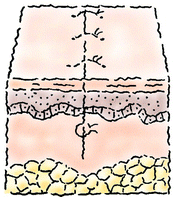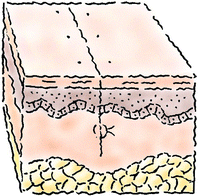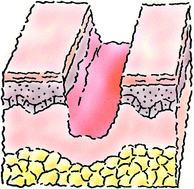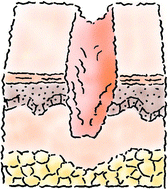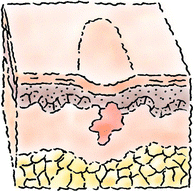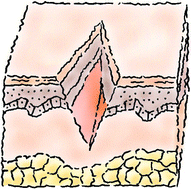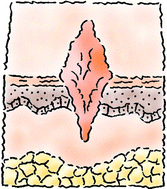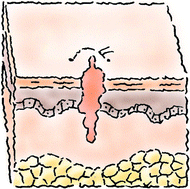Author(s): Lynette E. Franklin, APRN, ACNS-BC, CWOCN-AP, CFCN
Any disruption in the skin and underlying structures is considered a wound. Humans typically heal along a “programmed” cascade when there is an acute injury. The extent and type of damage—as well as other intrinsic factors, such as patient circulation, nutrition, and hydration—influence the rate of wound repair. Wounds can heal, or close, through a series of phases. The closure of the wound also dictates how it will heal. There are 4 types of wound closures: primary, secondary, tertiary intention, and epithelization.
Primary intention
Wounds that heal through primary intention usually don't involve the loss of tissue. These wounds are closed with sutures or staples at the time of surgery, closing all layers of tissue. Examples include surgical wounds, superficial traumatic wounds, and first-degree sunburn.
|

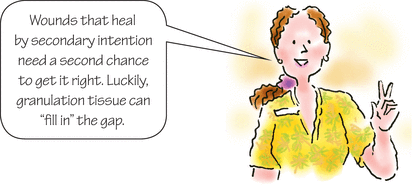
A wound that involves some degree of tissue loss heals by secondary intention. These full-thickness wounds fill in from the bottom with granulation tissue and then epithelize and scar. Pressure ulcers, burns, dehisced surgical wounds, and traumatic injuries are examples of this type of wound. These wounds take longer to heal, result in scarring, and have a higher rate of complications than do wounds that heal by primary intention.
|
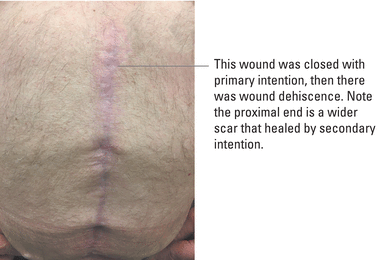
Tertiary intention
Wounds are sometimes left open for several days to allow edema or infection to resolve or for exudate to drain. These wounds heal by tertiary intention, also known as delayed primary closure. After the problem resolves, these wounds are closed with sutures or some other type of skin closure.
|
Epithelization
In this final process of wound healing, epithelial cells migrate across the wound bed. For partial-thickness wounds, those involving only the top layers of the skin (superficial dermis and epidermis), this is the primary method of healing. For example, with a knee abrasion, wound contracture and filling in with granulation tissue will not occur.
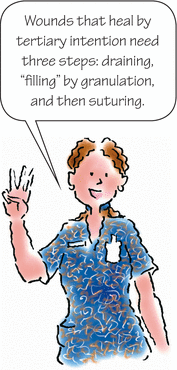
Bariatric patients are at risk for delayed wound healing due to:
- reduced tissue perfusion in adipose tissue and increased tension at the suture line caused by the weight of excess body fat
- excess skin folds (especially if the wound is within a fold or if a fold covers a suture line, which may keep the wound moist and allow bacteria to accumulate)
- associated medical conditions such as type 2 diabetes mellitus.
Bariatric patients are also at risk for dehiscence and evisceration because their diets may be seriously lacking in essential vitamins and minerals that are necessary for proper wound healing.

